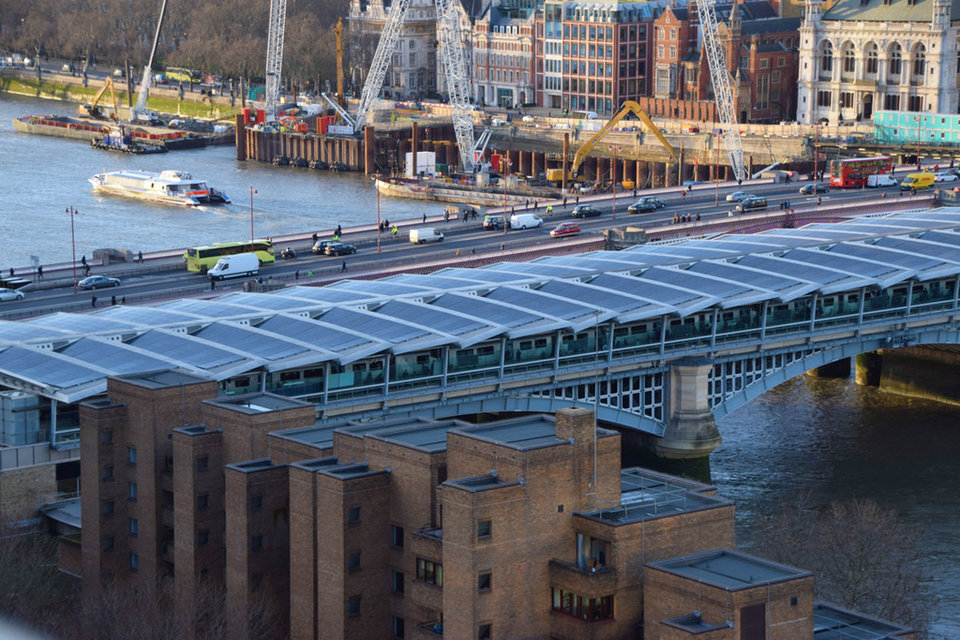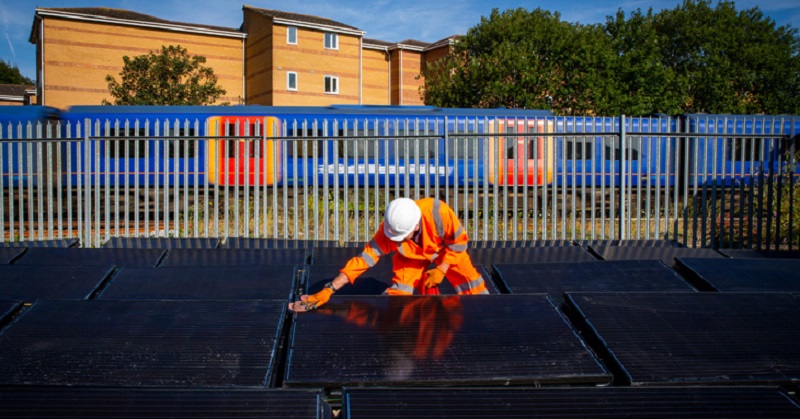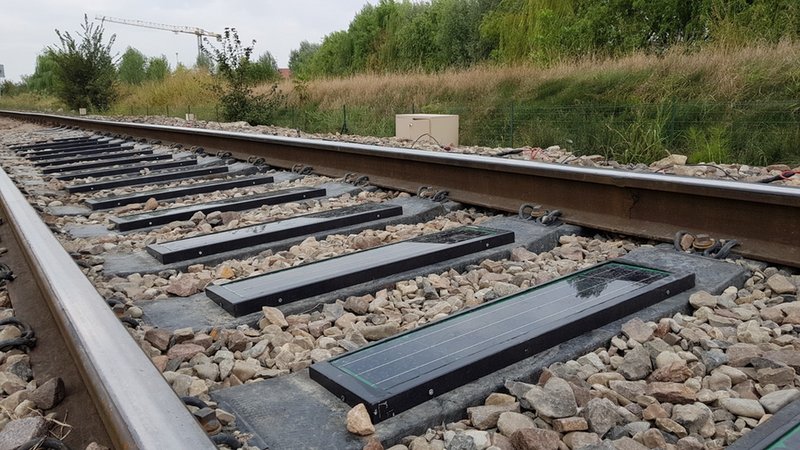These systems could bring several financial benefits to networks that are currently heavily relying on grids
Generating solar power
Solar-powered trains are usually put in motion by placing photovoltaic panels close to, or on, rail lines; they can generate enough electricity to trigger a traction current that will be distributed to the grid.
These systems could bring several financial benefits to networks that are currently heavily relying on grids. In fact, a growing lack of funds and the fact that grids are quickly reaching full capacity are making it harder to generate electricity from renewable sources to power the railways.

Image: VV Shots | Shutterstock.com
This has pushed developers to find ways to generate solar power directly for consumption, and findings from a 2017 study by London’s Imperial College and British charity 10:10 may be just the solution they’re looking for.
The ‘Riding Sunbeams’ report – which is also the name of the project derived from it – indeed revealed that generating solar from DC traction power systems could effectively minimise reliance on grids and save £4.5m a year.
This model, the report claimed, could soon be successfully implemented on city metro networks such as the London Underground, where 6% of the energy demand would be provided by solar power.
Solar-powered trains growing in popularity
Yet, while solar PV could soon land in underground networks around the world, it may be a while before it is applied to large-scale railways.
That is not to say, however, that efforts have not been made in this direction. Years of collaboration between 10:10, the UK’s Community Energy South and Network Rail have recently brought to life the world’s first solar-powered railway line, which opened in Hampshire, UK in August 2019.

Image – Ricardo. Caption: 10:10, the UK’s Community Energy South and Network Rail recently brought to life the world’s first solar-powered railway line in the UK. Image courtesy of Andy Aitchison / 1010 Climate Action
The brainchild of the Riding Sunbeams project, the line can now completely bypass the national grid by drawing power from around 100 solar panels. In the coming years, it is hoped it will be included in the world’s first full-scale community and commuter-owned ‘solar-traction farm’.
But this is not the only existing model. In India, for example, trains have solar power on their roofs and in 2017, the city of Guwahati became host to the first station in the country to be 100% solar-powered. The local government is further working to adopt solar PV at 8,500 stations in the coming years.
Projects of this kind also recently kicked off in Australia and Argentina, though so far in relatively small locations.
Projects of this kind also recently kicked off in Australia and Argentina
The idea of attaching solar panels to railway sleepers is also gaining considerable traction
The importance of railway sleepers
The idea of attaching solar panels to railway sleepers is also gaining considerable traction across the industry, as it potentially allows for solar PV to work on long routes at relatively low costs.
Initiatives within this framework have started popping up over the past few years, with companies such as Bankset Group and Greenrail leading the way.
The former, Bankset Group, is a British renewables financial investor whose prestige in the industry is growing at impressive speeds. The company is currently working on a project that, if effective, will see it deliver the largest solar installation in the world.

Caption: Image courtesy of Greenrail
Having kicked off in 2013 with financial support from European, Chinese and US partners, Bankset is conducting trials to attach solar panels made of silicon and aluminium to railway sleepers on a number of European and international networks.
While still carrying tests in 12 countries including Italy, France and the UK, as well as overseas, the company has already installed the first-ever solar panel on a rail track in Switzerland and is now pursuing a similar project in Germany.
If the trials prove to be successful, the technology could be a game-changer in the sector, as it could be extended to some 165 countries around the world and become the largest installation on the market.
On the other hand, Italian company Greenrail is currently gaining momentum thanks to its range of solar-powered sleepers, which incorporate photovoltaic panels and also contribute to a circular economy – being made up of some recycled materials.
Research remains limited to specific areas where locals and stakeholders have collaborated efficiently
Limitations of solar technology
Overall, the future of solar power in the railway industry looks undoubtedly bright, supported by intensive research, ground-breaking companies like Greenrail and Bankset, as well as a collective effort and strive to decarbonise the railways.
But are they enough to make solar power the future of rail? There is far less certainty on that, mainly because these projects are still in their infancy and have taken companies several years to be developed and implemented.
The technology itself bears some limitations, as it often needs to be backed by batteries. This is the case, for example, of Argentina’s upcoming line connecting San Salvador de Jujuy to La Quiaca. Trains running on this network will have solar panels on their roof, though will also be powered by batteries charged in stations.
The format is being adopted in Australia where, in 2017, the Byron Bay Railroad Company rolled out a train fitted with solar panels on its roof, as well as equipped with batteries, which are being used as backup in case of emergency.
Despite more and more projects involving solar panels launching around the world in recent times, research also remains limited to certain specific areas where locals and stakeholders have collaborated efficiently.
And even in cases where a whole country has been considered – like, for example, in the Riding Sunbeams project – research seems to suggest that only parts of railway networks could eventually run on solar power, mainly depending on funds and participation form the industry.
“We think solar could power 20% of the Merseyrail network in Liverpool, as well as 15% of commuter routes in Kent, Sussex and Wessex,” Alice Bell, head of communications at 10:10, wrote on the Guardian in 2017.
“There’s no reason it should just be a British thing either,” she added. “We’re especially excited about possibilities in San Francisco, Mexico City, India and Spain, but trains and trams all over the world could be running on sun in a few years' time.”
Similarly, in April this year, Bankset Group director Marc Isoti told Future Rail: “We believe that solar panels on rails are able to provide 30% of national grids’ 24/7 energy load requirements, and that this is now the most cost-effective solution.
“It is a political issue, as most of the rail network belongs to regions and respective states, many rail lines are privatised.”